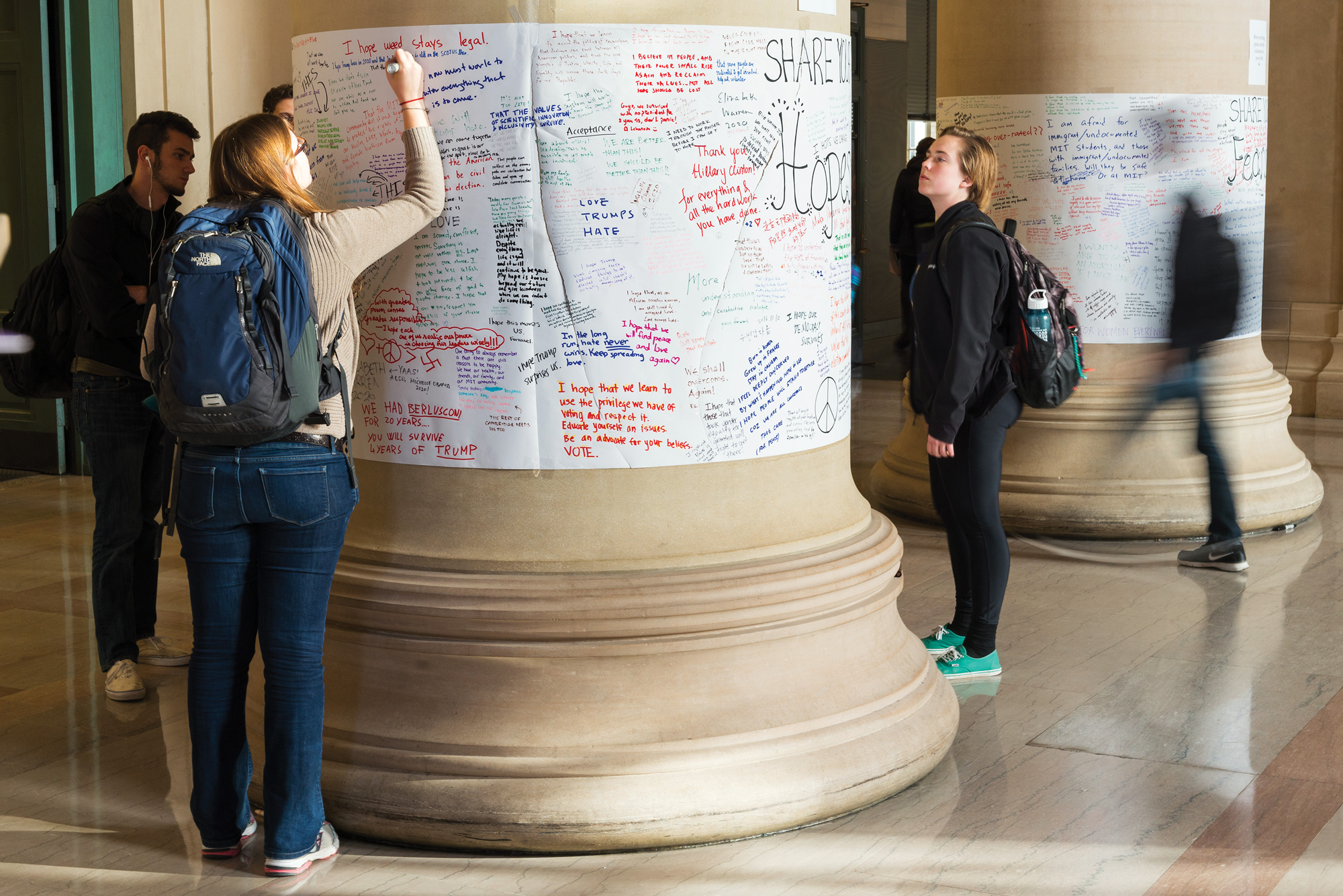Hopes and Fears

It became clear in the early hours of November 9 that the MIT community would need a way to process an election outcome few had expected. So Caroline Mak ’18 and her friends wrapped Lobby 7’s six columns in paper and invited people to share their hopes and fears. The columns quickly filled with fears of deportation, police brutality, loss of rights. Fears of more misogyny, racism, sexism, and xenophobia. Fears for the environment. Fears by Trump supporters that peers would never understand why they voted for him. The columns also filled with hopes: America can be great again, we can learn from this election, and it “will bring forth the toughest, smartest generation of ass-kicking women the world has ever known.” One person hoped to understand the 48 percent of American voters who made the opposite choice.
“We do some of our best work when we turn outward to the world,” President Reif wrote to the MIT community. “Let’s continue to do that now. And, following our students’ lead, let us find ways to listen to one another—with sympathy, humility, decency, respect, and kindness.”
Keep Reading
Most Popular
Large language models can do jaw-dropping things. But nobody knows exactly why.
And that's a problem. Figuring it out is one of the biggest scientific puzzles of our time and a crucial step towards controlling more powerful future models.
How scientists traced a mysterious covid case back to six toilets
When wastewater surveillance turns into a hunt for a single infected individual, the ethics get tricky.
The problem with plug-in hybrids? Their drivers.
Plug-in hybrids are often sold as a transition to EVs, but new data from Europe shows we’re still underestimating the emissions they produce.
Google DeepMind’s new generative model makes Super Mario–like games from scratch
Genie learns how to control games by watching hours and hours of video. It could help train next-gen robots too.
Stay connected
Get the latest updates from
MIT Technology Review
Discover special offers, top stories, upcoming events, and more.